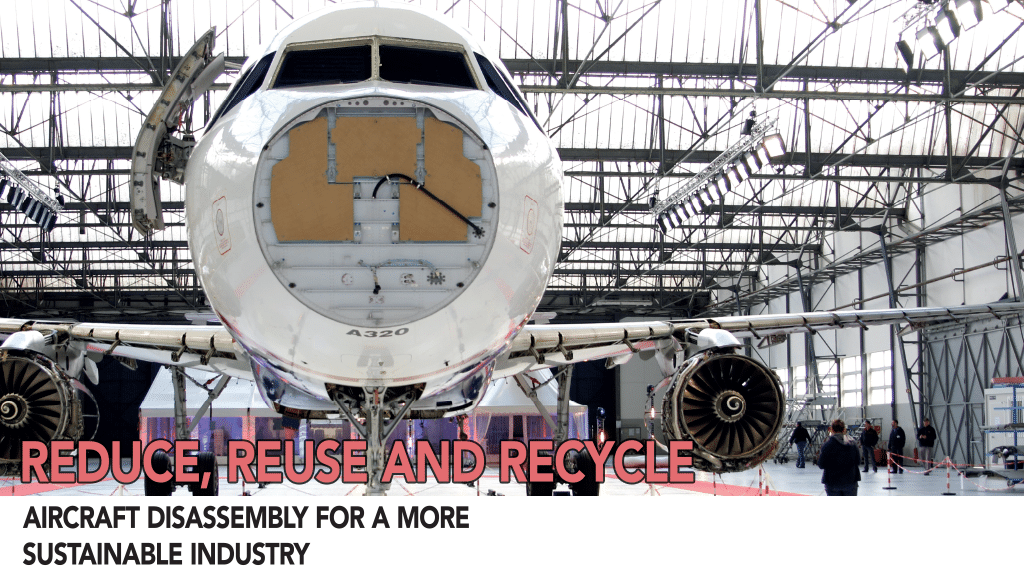Aviation aircraft teardown/part-out provides a sustainable source of high-quality, cost-effective spare parts for aircraft operators, maintenance facilities and others in the aviation industry. It helps to address the growing demand for spare parts, especially for older aircraft models or those that are no longer in production. By salvaging and reselling serviceable components, the teardown/part-out process offers an environmentally friendly solution by extending the lifecycle of existing parts and reducing the need for new manufacturing.
Recovering components and parts from an aircraft that has been retired or is no longer economically viable to operate and maintain is a main goal. “The teardown process aims to maximize the overall value of the retired aircraft versus part-out, which tends to target high-value parts to generate large revenue for the seller,” says Tony Whitty, senior vice president of aircraft & engine procurement at AJW Group, West Sussex, United Kingdom. “These are then reused as spare parts for other aircraft still in operation. After removed parts have been inspected and cataloged into the system, their condition is assessed for serviceability and their potential resale value. If parts can be reused, they are overhauled in facilities such as our MRO facility based in Montreal, AJW Technique, and they’re then offered out into the aftermarket for resale, lease or exchange. Part-out is a specific subset of the teardown process. Although both processes feed into the aftermarket, part-out tends to focus on a specific market demand for essential parts whereas teardown caters to the broader spare part aftermarket.”
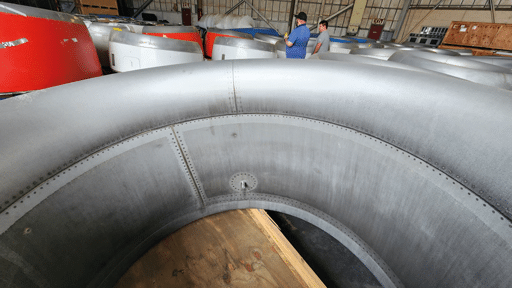
The primary focus of part-out is the profitable sale of individual components. “The profitability of a teardown is often more lucrative than part-out as it involves recovering a wider range of products and materials,” explains Stephen Damron, director of airframe and QEC product lines, Kellstrom Aerospace, Roselle, Ill. “Part-outs, on the other hand, are more selective and target high-value components only.”
When is an aircraft considered a candidate for teardown? It can be as a result of an extensive period of out-of-service or when expensive heavy maintenance is due requiring unique structural inspections, repairs or modifications. “The expenses related to latter activity in making the aircraft airworthy is a deciding factor for many owners, leasing companies and lessors” says Talha Faruqi, president of Atlanta-based Aventure Aviation, a company that has acquired 19 airframes in the last 16 months for teardown. “Generally speaking, we are seeing airframes reach retirement age at approximately 18 to 25 years of service, with a few teardowns under 10 years in service that are a result of unusual circumstances where the owners feel the cost to bring back to airworthy condition outweighs the opportunity to harvest parts and sell them in the current supply-and-demand opportunities.”
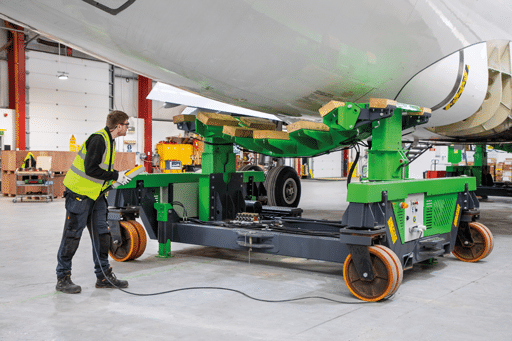
Aircraft teardown/part-out is growing and Covid is partly to blame. Post pandemic, there have been challenges for airlines in availability of aircraft parts caused by labor shortages, material availability and logistics issues. The problem has been exacerbated with delayed deliveries of new aircraft resulting in extension of existing aircraft leases and continued operations of matured aircraft. This in turn has led to increased demand of used serviceable material (USM) which is normally harvested off retired airframes.
“Stockists and suppliers of USM are paying a higher acquisition price for retired aircraft and are equally challenged finding MRO facilities where parts can be taken off an aircraft expeditiously,” Faruqi explains. “Any delays in parts removal are added costs especially with the high interest rates and borrowed funds in acquiring the aircraft. Equally, MRO shops who certify these parts as airworthy for further service have huge backlogs again due to labor or piece parts, required to fix the parts, causing shortage of USM in the market.”
Many can benefit from aircraft teardown and part-out. Lee Carey, vice president asset management at EirTrade Aviation, Dublin, Ireland, explains that his company works with many different customers throughout the process and from different parts of the industry. “Aircraft disassembly and part-out benefits various stakeholders by providing spare USM component availability and reducing the cost of procuring these parts for end users. This allows aircraft owners to monetize assets while ensuring the remaining material is then recycled, thus facilitating a more efficient global supply chain. Airlines can benefit from aircraft disassembly due to the increased availability of spare parts which can contribute to better operational efficiency. In addition, the cost savings which USM offers compared to new material offered by OEMs.”
Whitty also cites the environment benefits from this process. “AJW Group is focused on its sustainability efforts, and we’re proud to be making strides to create a more environmentally friendly aerospace industry through our MRO operations. We’re all trying to reduce the environmental impact of our businesses, which is why AJW Group has committed to the United Nations Global Compact (UNGC) and is committed to its sustainable development goals. It’s a win-win for everyone involved in the teardown/part-out process.”
In addition to the airlines and the environment, Sebastian Taylor, global sales manager at Air Salvage International (ASI), Cirencester, Gloucestershire, United Kingdom, explains how the following groups benefit from teardown and part-out:
• MRO facilities. MRO facilities rely on a steady supply of spare parts to support aircraft maintenance and repairs. Teardown/part-out provides MRO facilities with a reliable source of high-quality used components.
• Part traders. This is great business for many companies. A well-managed company will be able to make good profit. Once the high value parts, such as engines, landing gear, APU and avionics have been sold, the majority of the costs involved are already covered.
• Lessors. Similar to the above, lessors will utilize a part-out company to remove engines. These engines will be leased back out to the market to extend the investment potential.
• Aircraft manufacturers. This provides valuable feedback and insights for manufacturers to improve future designs based on the performance and durability of salvaged components.
• Local economy. ASI provides a variety of jobs to the community. Some of these roles are highly skilled while others less so. Air Salvage says it works closely with many schools and colleges as well as partnering with many charities. Lastly, due to the nature of the business it teams up with many local suppliers for specific material and services, an example of this is locally sourced sustainable wood for our crates used in shipping.
Procedures
Teardown of aircraft has become as much an art as it is knowing what parts have the highest demand and being aware where the supply line for parts is weak. To gain this knowledge requires being plugged in to market trends by constantly monitoring the daily inquiries from end users and then making a decision on which airframe has the ability to turn over fastest.
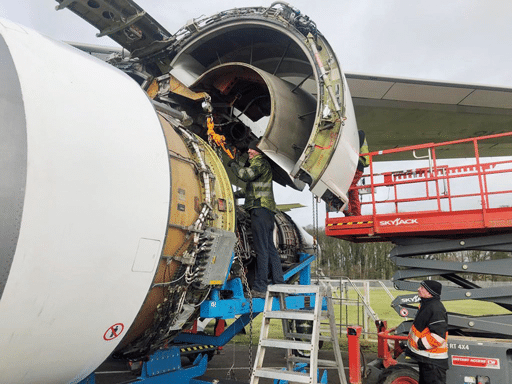
“Aventure Aviation realized several years ago that we would stay within a niche airframe rotable USM parts market and have lined ourselves up with companies who would acquire the powerplant (engines) off retired aircraft while Aventure acquires the airframes,” Talha says. “This model has worked for us and our strategy of acquiring multiple airframes at a time has been right when many parts suppliers stayed on the sidelines. We have close relationships with several parts suppliers who have acquired packages of spares off our teardowns and this has helped us accelerate our desire to purchase additional airframes.”
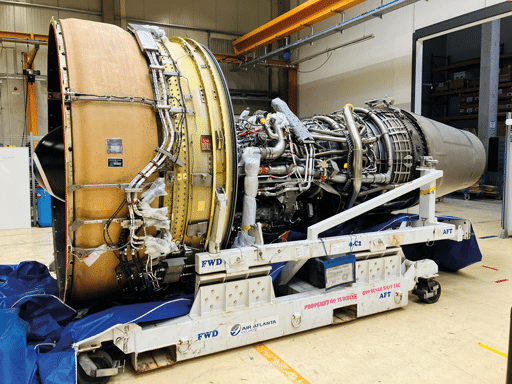
The safety and efficiency of the aircraft teardown/part-out process are paramount as components and parts need to be recovered in the best possible condition. In the beginning of the process, there is usually an initial assessment of the condition of the retired aircraft which includes looking into maintenance history and the potential for aftermarket resale of the parts.
After this, Whitty says his team then begins the disassembly, beginning with removing external parts and then moving internally to components, systems, avionics and other high-cost equipment. “Once this is done, components are inspected and assessed for possible reuse, after which those that can be used in the aftermarket are labeled and cataloged into an inventory tracking and location system. Items that will be reused are then overhauled according to industry standards and may be tested and recertified to meet requirements. Lastly, once the overhaul, refurbishment and regulatory certification are completed, the components are marketed directly to buyers and on aftermarket buying platforms.”
Taylor lists the main procedures that Air Salvage uses during teardown and part-out:
• Initial assessment: The first step is to evaluate the aircraft’s condition, maintenance history and market demand for its parts. This is carried out by our client in advance.
• Regulatory compliance: Adherence to applicable regulations and requirements is crucial throughout the teardown process.
• Disconnection and isolation: Aircraft systems, such as electrical, hydraulic and fuel systems, are carefully disconnected and isolated following manufacturer’s guidelines and industry best practices.
• Component removal: Skilled technicians systematically remove valuable components, such as engines, avionics, landing gear, flight control surfaces and other high-demand parts. This process involves labelling and packaging of components.
• Structural dismantling: The aircraft’s structure is dismantled, focusing on salvaging components with market value. This may involve removing wings, fuselage sections, tail assemblies and other structural elements.
• Inventory and documentation: Throughout the teardown, a comprehensive inventory is maintained, documenting all parts and their condition.
• Parts evaluation and repair: After removal, components are carefully inspected, tested, and evaluated for their condition and serviceability.
• Storage and distribution: Salvaged components are stored in appropriate facilities. Parts are then distributed for resale or reuse.
• Scrap management: Parts that are not deemed economically viable for reuse or resale are properly disposed of or recycled in compliance with environmental regulations.
Hazardous material management is crucial as well. Strict environmental regulations and compliance rules must be upheld throughout these dismantling procedures; hazardous materials and fluids must be removed safely and according to relevant regulations.
Damron explains, “Proper handling and disposal of hazardous materials involves the removal and management of fluids (fuel, oil, hydraulic fluids), chemicals and batteries safely and in compliance with environmental regulations to prevent pollution and harm. Documentation and certification are maintained throughout the part-out process. This includes recording details of component assessments, refurbishment activities and material recycling. Proper certifications and documentation ensure traceability and transparency in the entire process.”
Ease of Aircraft Teardown
Some aircraft are easier to tear down and part-out than others. Design and accessibility, availability of documentation and support, market demand, age and condition of the aircraft and regulatory considerations contribute to this complexity.
Carey says his company closely examines the viability of every teardown project and is continually seeking ways to maximize efficiency and revenues for its customers. “It’s important to consider that each aircraft is unique, and the specifics of the teardown process can vary depending on the aircraft’s condition, modifications and maintenance history. On newer aircraft in particular, there can be limitations in terms of the number of repair shops which have the capability to repair specific components. This can make it more challenging for USM companies to repair those components efficiently when there are only one or two repair sources.”
Faruqi explains the aircraft that are easier to tear down and have a faster ROI are the narrow-body, single-aisle Airbus and Boeing fleet. “This is primarily due to the number of similar aircraft still in operation world-wide and the shortage of factory new replacement parts. Wide-body aircraft have their own unique challenges and harvesting parts for resale depends upon the market availability. Many parts suppliers have reluctance in investing in tearing down aircraft such as B747, B777-200, A340 and A380s for the same reason that there are not enough customers to warrant a costly investment.”
Taylor says smaller aircraft tend to be a little easier due to the size of components. However, “The B737 and A320 are the most popular and therefore clients will have a larger harvest list for these. Wide-body aircraft have larger and heavy components which have their challenges. Obviously the B747 and A340 have four engines, again increasing parts to manage.”
Taylor lists common aircraft parts and sections during teardown and part-out and the ease or difficulty of doing so:
• Engines. Engine removal is typically a complex and time-consuming process. Their removal involves disconnecting numerous systems, such as fuel, electrical and hydraulic connections. Additionally, engines are heavy and require specialized equipment.
• Flight control surfaces. Flight control surfaces, such as ailerons, elevators and rudders are critical for aircraft maneuverability. These components are usually attached to the wings or tail section and require careful disconnection and handling to avoid damage.
• Structural sections. Removing large structural sections, such as wings or fuselage segments, can be challenging due to their size, weight and the need to maintain structural integrity.
Aircraft disassembly processes involve a range of specialist machinery and equipment to dismantle the aircraft and extract valuable components safely and efficiently. EirTrade has developed a cradle that can support the fuselage during the teardown process of narrow-body aircraft and enable high-value components such as landing gear to be removed at the start of the process.
